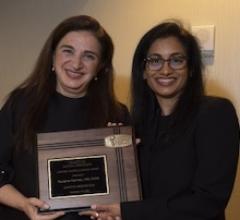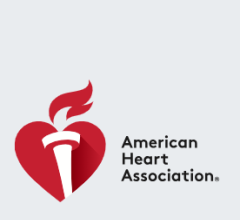
Getty Images
January 30, 2024 — Only 10% of people who experience a cardiac arrest survive.[1] In new challenge goals outlined in the American Heart Association Emergency Cardiovascular Care 2030 Impact Goals and Call to Action to Improve Cardiac Arrest Outcomes, the American Heart Association’s volunteer advisory Emergency Cardiovascular Care Committee makes the case for doubling survivorship to 20%. New 10-year goals for the nation, published today in the Association’s flagship peer reviewed journal Circulation, can be achieved by increasing the rate of bystander cardiopulmonary resuscitation (CPR) to more than 50% and increasing the frequency of defibrillation (AED use) for out-of-hospital cardiac arrest before emergency services arrive; survival after cardiac arrest whether at home or in the hospital, and neurologically intact survival (surviving with proper brain function).
Equity-focused goals are also key to improving cardiac arrest survival outcomes with a specific focus on racial/ethnic and other historically marginalized groups and communities with low socioeconomic status.
The volunteer expert committee identifies clinical goals every 10 years that are aligned with the Association's broader mission while seeking to provide guidance for scientists, health care professionals, the public, policymakers and others to focus on improving outcomes from cardiac arrest. This new, bold goal – announced during the Association’s centennial year – highlights its focus on saving and improving lives.
“We hope these goals will serve as an aspirational and achievable road map for improved heart health and better survival rates in all communities and for all people,” said Raina M. Merchant, M.D., M.S.H.P., FAHA, American Heart Association volunteer chair of the statement’s writing committee and a professor of emergency medicine at the University of Pennsylvania’s Perelman School of Medicine. “Achieving them will truly take a collaboration among health care professionals, first responders and the public and will require supporting registries, such as CARES and Get With the Guidelines, to help with tracking and reporting about the many factors that impact cardiac arrest incidence, treatment and outcomes.”
Currently, 90% of people who experience cardiac arrest outside of a hospital die, in part because they do not receive CPR more than half of the time.[2] To save more lives from the approximately 350,000 cardiac arrests that occur outside of the hospital every year, increasing the number of people who respond to cardiac arrest by calling 911, delivering high-quality CPR and getting and using an AED as soon as it is available are crucial to survival outcomes.[3]
Black or Hispanic adults who experience cardiac arrest outside a hospital setting are substantially less likely to receive lifesaving care from a bystander.[4] The Association is working to change this by improving access to lifesaving CPR training in these communities.
The Association’s focus on CPR training and education has already shown improvement in bystander willingness to provide lifesaving care. In a 2023 consumer survey, over half of the participants said they would perform either CPR or Hands-Only CPR and that their confidence level in performing CPR has improved from 2021.[5] Immediate CPR and defibrillation are key to doubling the survival rate of cardiac arrest by 2030.
An American Heart Association scientific statement is an expert analysis of current research and may inform future clinical practice guidelines. See the full statement for more in-depth detail and specific numbers on these Emergency Cardiovascular Care 2030 Impact Goals.
This scientific statement was prepared by the volunteer writing group on behalf of the American Heart Association’s Emergency Cardiovascular Care Committee. American Heart Association scientific statements promote greater awareness about cardiovascular diseases and stroke issues and help facilitate informed health care decisions. Scientific Statements outline what is currently known about a topic and what areas need additional research. While scientific statements inform the development of guidelines, they do not make treatment recommendations. American Heart Association guidelines provide the Association’s official clinical practice recommendations.
The Association receives funding primarily from individuals; foundations and corporations (including pharmaceutical, device manufacturers and other companies) also make donations and fund specific Association programs and events. The Association has strict policies to prevent these relationships from influencing the science content. Revenues from pharmaceutical and biotech companies, device manufacturers and health insurance providers and the Association’s overall financial information are available here.
For more information: www.heart.org
References:
[1] https://www.ahajournals.org/doi/epdf/10.1161/CIR.0000000000001123
[2] Hansen, Carolina Malta. "Association of Bystander and First‐Responder Efforts and Outcomes According to Sex: Results From the North Carolina Heart Rescue Statewide Quality Improvement Initiative." Journal of the American Heart Association 7, no. 18 (2018): e009873. https://doi.org/10.1161/JAHA.118.009873
[3] Tsao, Connie W. "Heart Disease and Stroke Statistics—2023 Update: A Report From the American Heart Association." Circulation 147, no. 8 (2023): e93–e621. https://doi.org/10.1161/CIR.0000000000001123
[4] Garcia, R. Angel. "Racial and Ethnic Differences in Bystander CPR for Witnessed Cardiac Arrest." New England Journal of Medicine, no. 387 (2022): 1569-1578. https://doi.org/10.1056/NEJMoa2200798
[5] 2021 and 2023 Elevance Health Foundation surveys available upon request.


 November 14, 2025
November 14, 2025 









